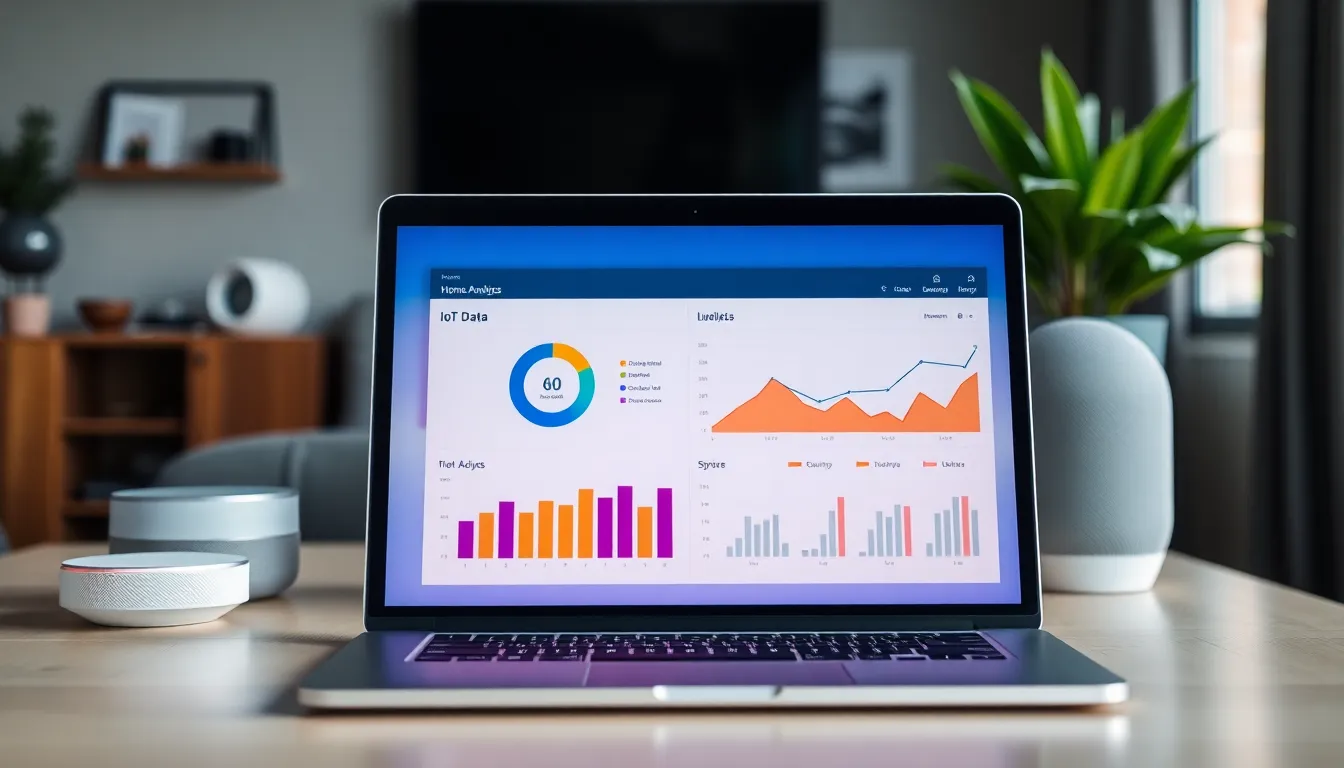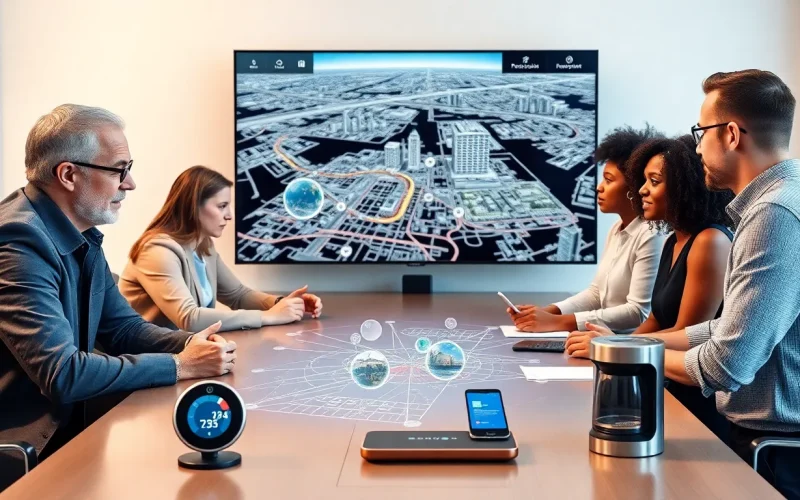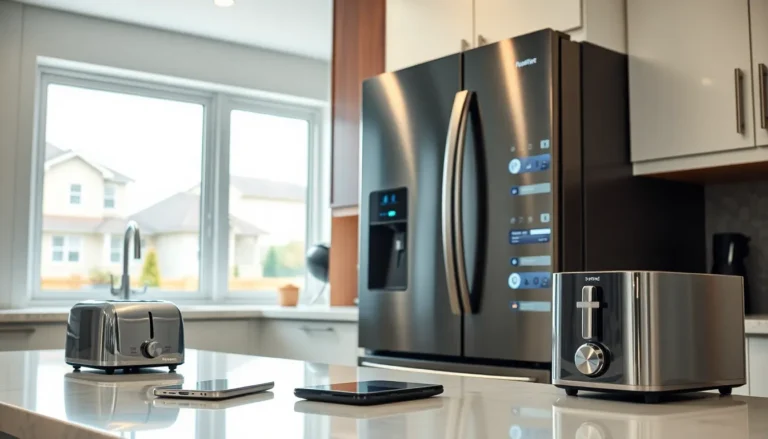Table of Contents
ToggleThe Internet of Things (IoT) is like that friend who shows up uninvited but ends up being the life of the party. With smart devices connecting everything from fridges to fitness trackers, it’s hard to ignore how this tech revolution is reshaping our lives. Imagine a world where your coffee brews itself as you wake up, and your thermostat knows just the right temperature to keep you cozy. Sounds dreamy, right?
The Evolution of IoT
The trajectory of the Internet of Things showcases rapid advancements and growing impact on daily life. Understanding this evolution requires examining historical contexts and the key technologies that shaped IoT.
Historical Context
The roots of IoT trace back to the early 1980s with the advent of networked devices. Pioneering projects, like the toaster that could report its status online, illustrated the potential of connected devices. The term “Internet of Things” emerged in 1999 through Kevin Ashton, emphasizing connectivity and data exchange. By the early 2000s, increased internet accessibility and wireless technologies fostered expansion. Significant milestones include the introduction of IPv6, allowing for a virtually limitless number of devices to connect. Progress resulted in smart home devices gaining popularity in the 2010s, transforming everyday interactions and everyday activities.
Key Technologies Shaping IoT
Several technologies drive the advancement of IoT, each playing a pivotal role. Wireless communication standards like Wi-Fi, Zigbee, and LoRa enable devices to connect seamlessly. Cloud computing offers scalable storage and processing capabilities, supporting vast amounts of data generated by IoT devices. Edge computing allows data processing closer to the source, improving response times and reducing latency. Enhanced sensor technology captures environmental data, facilitating smarter systems. Lastly, artificial intelligence plays a critical role in analyzing data trends, enabling predictive maintenance and personalized user experiences. Each technology collectively boosts the efficiency and functionality of IoT networks, propelling the ecosystem forward.
Current Trends in IoT

Current trends in IoT showcase the fast-paced evolution of technology reshaping society. Two major factors driving this change include cloud computing integration and edge computing developments.
Cloud Computing Integration
Cloud computing plays a crucial role in IoT by enabling seamless data storage, processing, and management. Providers like Amazon Web Services and Microsoft Azure offer scalable solutions that accommodate the ever-increasing number of connected devices. These platforms ensure that data can be accessed in real-time, enhancing decision-making and operational efficiency. Businesses leverage cloud infrastructure to reduce costs while improving performance. Furthermore, cloud-based analytics tools allow companies to extract valuable insights from the massive datasets generated by IoT devices.
Edge Computing Developments
Edge computing complements cloud solutions by bringing data processing closer to the source. This approach reduces latency, enabling faster response times for time-sensitive applications. Devices equipped with edge computing capabilities can analyze data on-site, minimizing the need for constant cloud connectivity. By processing information locally, they also enhance security and privacy, as sensitive data remains within the device network. Companies increasingly adopt edge computing to improve efficiency in various industries, from manufacturing to healthcare. Overall, these developments facilitate smarter IoT solutions that respond quickly to changing conditions.
Challenges Facing the IoT Future
Challenges lie ahead for the Internet of Things (IoT) as it integrates into everyday life. Several key areas require attention to ensure successful advancements.
Security Concerns
Security concerns present significant risks in IoT environments. Devices often lack robust security protocols, exposing them to vulnerabilities. Cyberattacks can target smart devices, leading to data breaches and unauthorized access. A study by the IoT Security Foundation indicates that 30% of IoT devices are susceptible to hacking due to weak security. Manufacturers must prioritize strong authentication methods and continuously update firmware to address these vulnerabilities. End-users also play a crucial role; they must implement reliable security practices, such as regularly changing passwords and utilizing network firewalls.
Interoperability Issues
Interoperability issues complicate IoT framework developments. Diverse manufacturers create devices using different communication protocols and standards, leading to challenges in connectivity. A variety of platforms also contribute to inconsistent functionality across devices. According to a report by MarketsandMarkets, interoperability concerns hinder IoT adoption for 50% of organizations. To navigate these hurdles, industry-wide standards must evolve. Creating common frameworks can enhance device compatibility and streamline user experiences. Collaborative efforts among companies will be essential for fostering an ecosystem where devices communicate effortlessly.
Predictions for the IoT Future
The future of IoT presents substantial opportunities for innovation. Smart cities and infrastructure will transform urban living by enhancing efficiency and sustainability.
Smart Cities and Infrastructure
Smart cities will utilize IoT technology to optimize resources and improve services. Connected sensors will monitor traffic flow, reducing congestion and lowering emissions. Data-driven insights can enhance energy management in buildings, resulting in significant cost savings. A study indicates that smart city initiatives could save cities $7 trillion globally by 2025. Intelligent waste management systems will also play a role, using sensors to optimize collection routes and minimize costs. Moreover, public safety will benefit from integrated IoT technologies, enabling quicker response times to emergencies.
Healthcare Innovations
Healthcare stands to gain immensely from IoT advancements. Connected medical devices will facilitate continuous patient monitoring, improving health outcomes. Wearable technologies will allow real-time data collection, enabling practitioners to tailor treatments effectively. According to research, remote patient monitoring could reduce hospital readmission rates by 30%. IoT applications can streamline operations in hospitals, enhancing inventory management and reducing wait times for patients. Data analytics will be vital in identifying trends, guiding preventive care, and ultimately improving patient satisfaction.
The future of IoT promises remarkable transformations across various sectors. As technology continues to evolve, smart devices will become even more integral to daily life. The potential for innovation is immense, particularly in creating smart cities and enhancing healthcare.
Addressing challenges like security and interoperability will be crucial for widespread adoption. Collaboration among industry players can lead to standardized solutions that improve device compatibility and user experiences.
With ongoing advancements in cloud and edge computing, the IoT landscape is set to redefine efficiency and convenience. Embracing these changes will not only elevate everyday experiences but also drive significant economic benefits globally.





